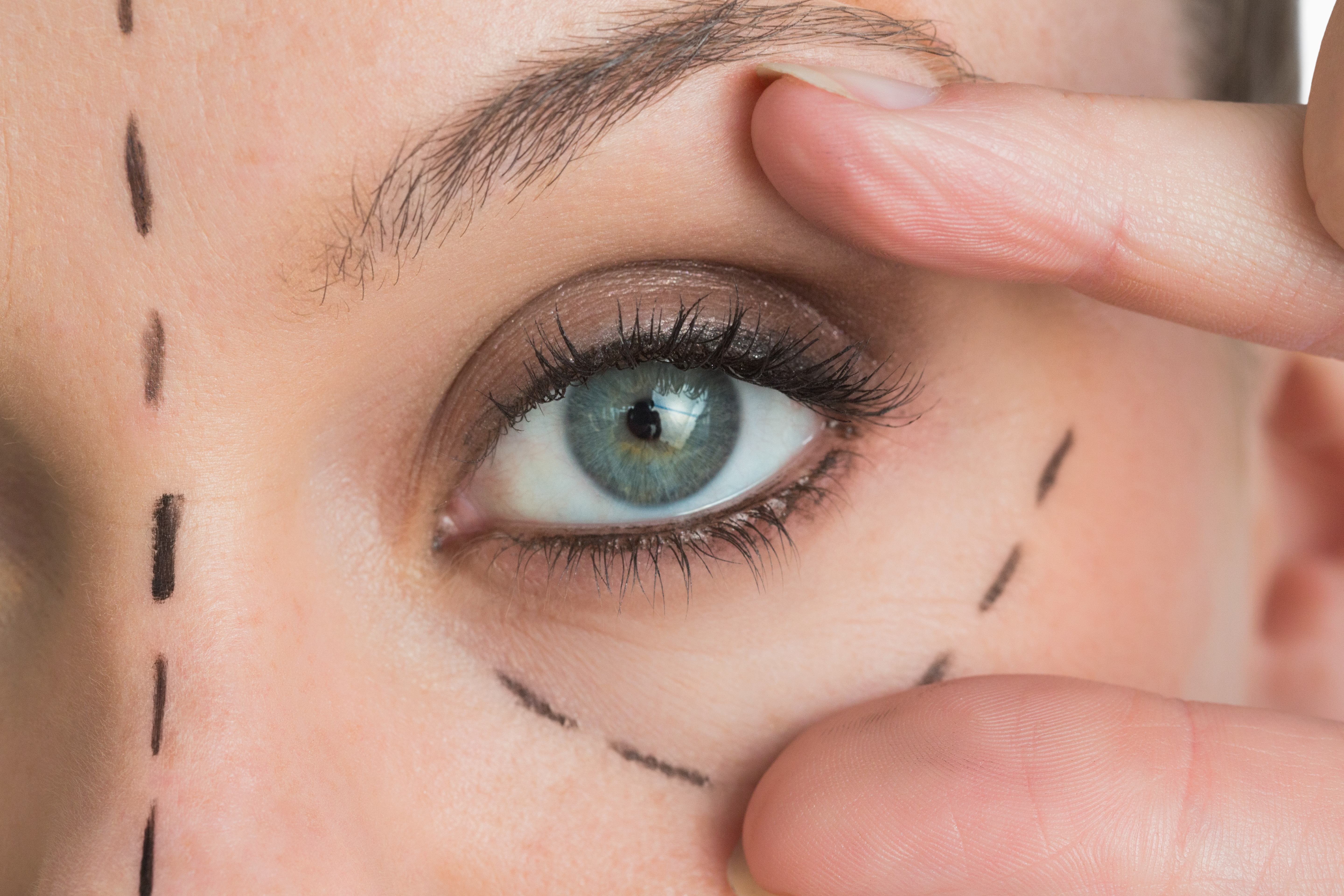
Most research today tells us the first signs of premature aging in the face will start to appear around the age of 25. When you turn 25, the process behind wrinkles, sagging skin, and loss of skin volume start working its unfair magic. If you smoke, live where there’s a great deal of sunshine, or live near areas where there’s high air pollution, the breakdown of your underlying skin structures and external signs of aging may even be accelerated to varying degrees.
Signs of aging in the face—jowls, submental fat (a double chin), and pronounced nasolabial folds (smile lines)—often give off a tired expression, giving a false projection of who you are and how you feel to the people around you. When you reach the point where you’re not happy with the reflection looking back at you in the mirror, you may consider facial plastic surgery or minimally-invasive, non-surgical cosmetic treatments to help you feel more confident. Often, patients have a choice of whether they’d like to go the surgical route with a traditional facelift, or if they’d like to take advantage of newer technology like tthe FaceTite treatment plan.
There are many considerations when it comes to choosing the right treatment for you. Here, we’ll go through some of the questions we ask our patients to help decide between a facelift and FaceTite at our Portsmouth, NH practice.
Is Surgery an Option for You?
One of the most important things we determine during a consultation for any treatment or procedure is that you’re a healthy candidate. If you undergo a facelift targeting the superficial muscular aponeurotic system (SMAS) or even a mini-facelift, you may need some form of anesthesia (although less likely with a mini-facelift) or sedation. That requirement can sometimes exclude patients from facelift procedures.
Some patients, because of drug allergies or other health conditions may not be able to undergo surgery without significant risk. In most cases, we would point patients in this category toward FaceTite or even some other non-surgical procedures.
What Type of Results Are You Looking to Achieve?
Your age and the condition of your facial skin will be factors in determining whether a facelift or FaceTite is right for you. Although a traditional facelift can produce much more dramatic changes in your overall appearance, targeting excess fat cells—a signature benefit of FaceTite—may be more effective for your specific conditions without exposing you to some of even the minor risks associated with facelift surgery. Additionally, a FaceTite treatment plan may be more customizable if you’re experiencing signs of aging or sagging skin in areas outside the reach of facelift surgery.
How Much Time Do You Have for Recovery?
Your tolerance for a longer recovery time may influence your choice between FaceTite and a facelift. The recovery for facelift surgery can be slightly longer than FaceTite and will require you to be on bed rest for about 2-4 days immediately following your procedure. The entire length of a facelift recovery is about 10 days, with your sutures being removed after about a week. According to the American Society of Plastic Surgeons, the average time to resuming normal routines is about 10-14 days.
By contrast, you’ll bounce back much faster from a FaceTite appointment. You’ll be able to return home immediately following your treatment and will experience some swelling and maybe bruising for about a week after.
How Long Do You Want the Results to Last?
Although both treatments boast long-lasting results, the results of an SMAS facelift may last more than twice as long as a FaceTite treatment.
There are many factors that make the length and effectiveness of cosmetic procedures vary, but in general, FaceTite treatment results tend to last about five years. An SMAS facelift, however, may last about ten to fifteen years before it’s necessary to consider revisions.
Consider your long-term aesthetic treatment goals to determine whether it’s best to opt for a facelift or FaceTite in your treatment roadmap.
Facial Plastic Surgery or Non-Surgical FaceTite, Which Is Better for You?
If you’d like to speak with board-certified facial plastic surgeon Dr. Anthony Wilson about facial plastic surgery or your facial rejuvenation options, please reach out to our practice and schedule your consultation today.
Call (603) 294-4526 to schedule a consultation with AW Plastic Surgery in Portsmouth, NH, or contact us through our website.
